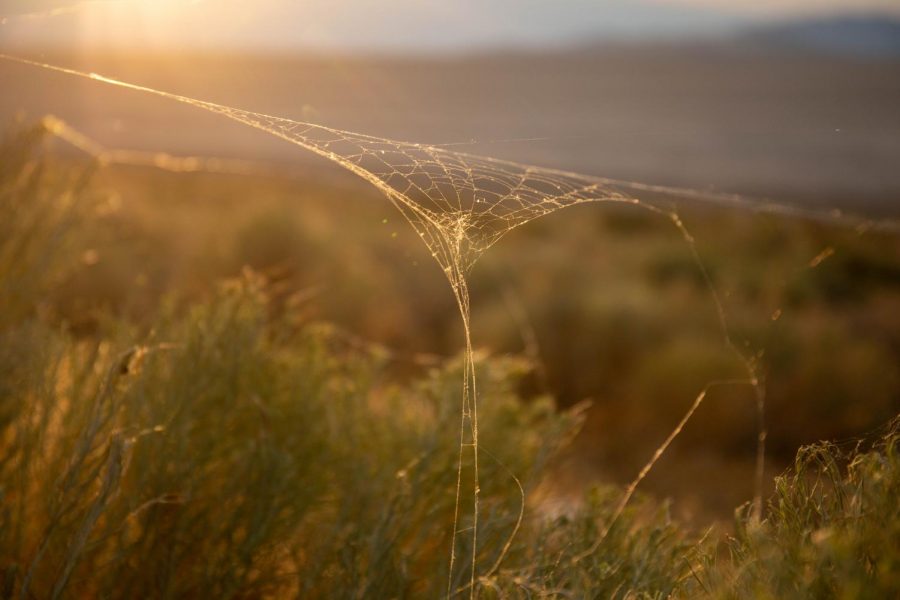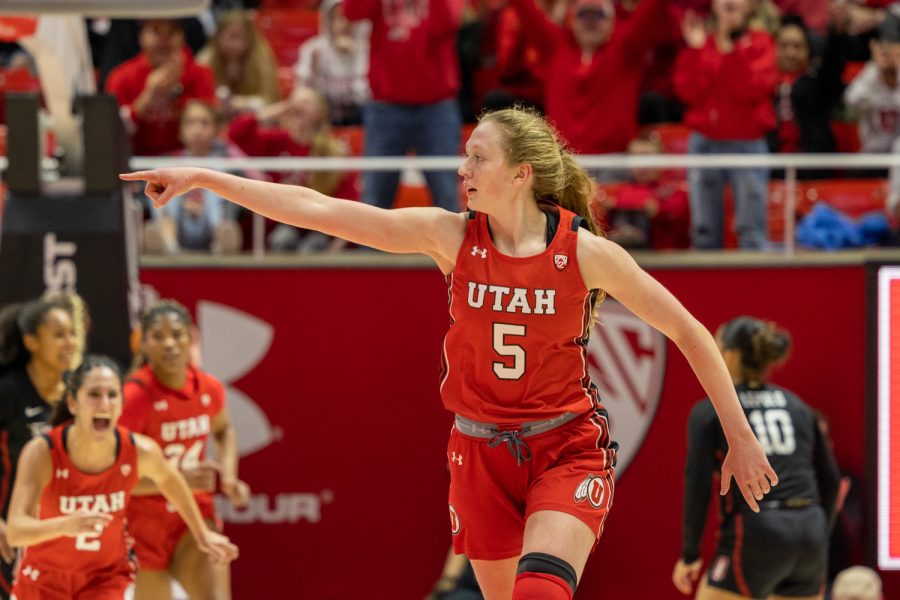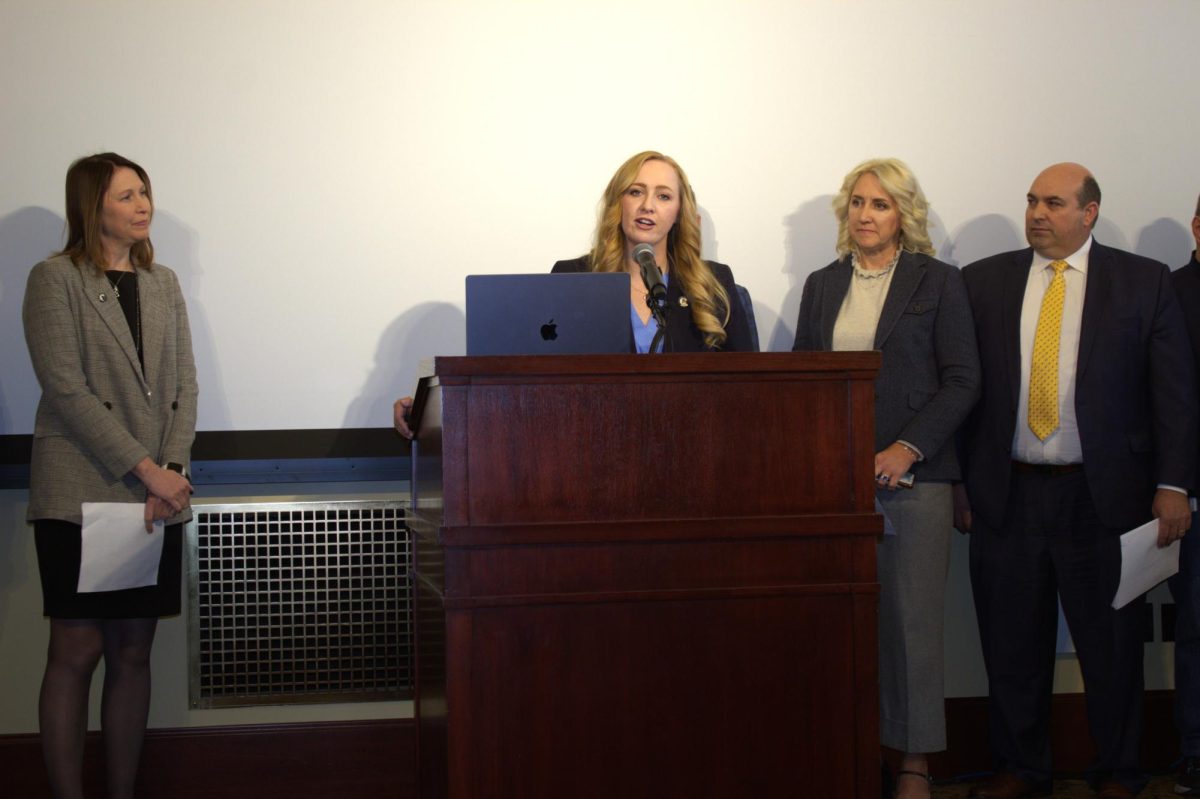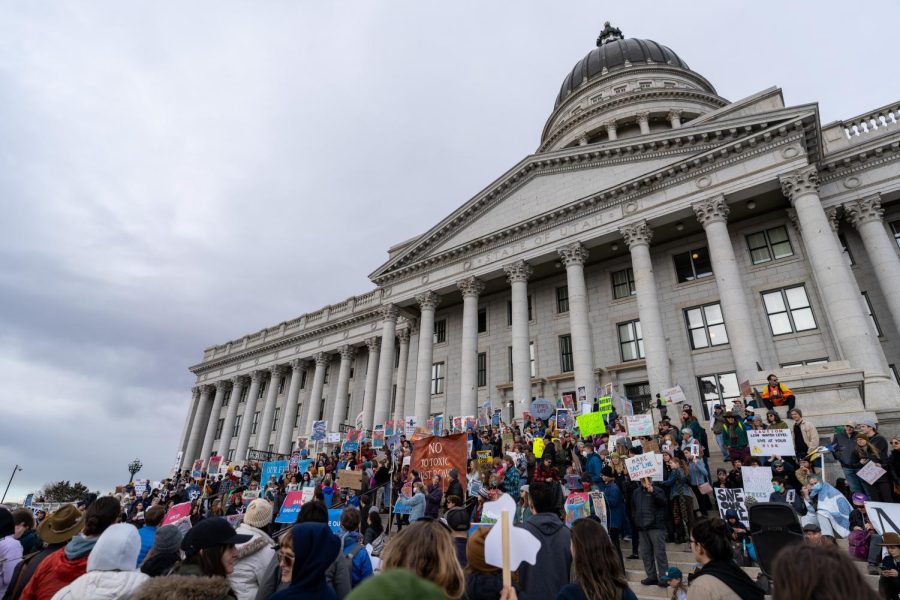2021 UN Climate Change Conference Reveals Global Priorities, U Community Responds
Spider webs stretch across sage brush and rabbit brush on either side of the causeway at Antelope Island State Park in Syracuse, Utah on July 27, 2021. (Photo by Gwen Christopherson | The Daily Utah Chronicle)
January 11, 2022
Representatives of nearly 200 countries gathered at this year’s United Nations Climate Change Conference in Glasgow, Scotland. Throughout these two weeks, nations agreed to “maintain 1.5C,” recommitting to the goal of keeping global temperature rises below 1.5 degrees Celsius, among other agreements.
“For nearly three decades the UN has been bringing together almost every country for global climate summits – called COPs – which stands for ‘Conference of the Parties.’ In that time climate change has gone from being a fringe issue to a global priority,” their official website reads.
University of Utah graduate student Jessica Chaplain was able to go to the conference in person. Her main focus in her studies at the U is in climate justice activism.
“I’m part of an international organization called International Environmental Communication Association,” Chaplain said. “They offered to allow people to nominate themselves to go to the conference. I did that through them and got selected based on the research interest and how well it fits.”
Chaplain was an observer at COP26. Her experience included photographing, taking notes and recording the conference.
“People went into this thinking, ‘this has got to be it because if there isn’t the right kind of action by this point, we’re reaching that point where we can’t really do anything anymore,” Chaplain said.
The United Nations Climate Change Conferences have been criticized for possibly failing to do more.
“The question at this point is, ‘are these conferences actually useful?'” Chaplain said. “There’s so much pressure on these conferences to be this site where big actions are taken and they aren’t every time. This year, to my knowledge, was the first year they acknowledged that fossil fuels obviously contribute to climate change … so there’s a question of is this even useful at this point?”
There are a variety of effects climate change is having on both Utah and Salt Lake City.
“There’s risks associated with heat waves, megadroughts, dust storms, impacts of wildfire and changes in seasonality … we also see changes in terms of precipitation,” said Brenda Bowen, a professor of geology and geophysics at the U. “That’s one of the major changes locally in Utah. You might see things associated with risks such as flooding, megadroughts and reduced snowpack.”
Reduced snowpack is especially important for Utah, considering the impact skiing and snowboarding have on Utah’s economy and culture.
“Snow is melting more easily,” said Thomas Reichler, an associate professor of atmospheric sciences at the U. “The ski season is starting later in the year and ending earlier in spring. It’s a relatively important sector of the economy here in Utah.”
U President Taylor Randall re-signed the Presidents’ Climate Leadership Commitment, which is “a collection of hundreds of universities and colleges committed to innovation and resilience in the face of climate change,” according to an article by Ayrel Clark-Proffitt of the sustainability office at the U.
“We’re actually working with a network of universities who are all doing this kind of work and really thinking about climate justice,” Bowen said. “Every community, your geography, ecology, neighborhoods, history and culture, all of this makes it unique … We have our unique challenges, but also opportunities here in Salt Lake and at the University of Utah.”
There are many different ways for U students to get involved in the fight against climate change.
“There’s so much opportunity through our climate action planning that we’re engaged in this work on climate resilience,” Bowen said. “We invite all to be a part of that. We need people with both focus on mitigating climate change and also creating more resilient communities in the face of climate change.”








